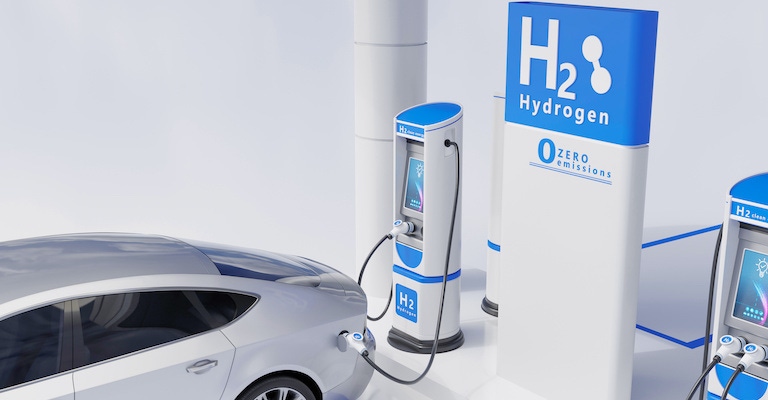Will Hydrogen-Powered Cars Finally be Possible Thanks to a New Set of Tools?
Computational modeling developed can help make the conversion of hydrogen and oxygen into water more predictive for fuel-cell development.
July 1, 2021

Scientists long have believed that hydrogen-powered fuel cells will be the answer to clean energy for electric vehicles (EVs) as another way for automobiles to shed their dependence on fossil fuels.
However, the technology still has not lived up to its mainstream promise, mainly because developing a safe and reliable way to convert hydrogen and oxygen safely into water, with a byproduct of electricity to run a vehicle continues to provide challenges to researchers.
A team at the University of Colorado Boulder (CU Boulder) hopes to change that by arming scientists with a set of new tools to better understand the conversion process for hydrogen fuel cells and to develop new methods that are safe and effective for powering EVs.
Fuel-cell vehicles run by combining hydrogen in a tank with oxygen taken from the air to produce the electricity they need, so they eliminate the need for a battery to be recharged using a plug and are more or less pollution-free, producing water vapor as a byproduct.
The new research--led by Hendrik Heinz, an associate professor in the Department of Chemical and Biological Engineering, in partnership with the University of California Los Angeles—is primarily focused on finding effective catalysts for the fuel cell that “burn” the hydrogen with oxygen under controlled conditions needed for safe travel, he said.
This catalyst also should be able to achieve this goal at near-room temperature and feature high efficiency and a long lifetime in an acidic solution, he said.
“For decades, researchers have struggled to predict the complex processes needed for this work, though enormous progress has been made using nanoplates, nanowires, and many other nanostructures,” Heinz explained in a press statement.
Simulation Strategies
One catalyst that is currently used for fuel cells is platinum metal, he said. However, predicting the reactions and best materials to use for scaling up or different conditions using this catalyst has so far been challenging, Heinz said.
To help make this a more exact science, he and his team worked with computational and data-intensive simulations to study the interaction between oxygen molecules as they encounter different barriers by molecular layers of water on the platinum surface.
These interactions are key to creating a conversion process that can be controlled to work efficiently, as they are the difference between a slow or fast follow-on reaction, Heinz explained
Indeed, these reactions happen quite fast, as the conversion into water takes about a millisecond per square nanometer to complete. They also occur on a tiny catalyst surface, creating variables that come together in a complex way that Heinz’s team has modeled so they can be more predictable to scientists, he said.
“We have developed models for metal nanostructures and oxygen, water, and metal interactions that exceed the accuracy of current quantum methods by more than 10 times,” Heinz explained in a press statement. “The models also enable the inclusion of the solvent and dynamics and reveal quantitative correlations between oxygen accessibility to the surface and catalytic activity in the oxygen reduction reaction.”
Researchers published a paper on their work in the journal Science Advances.
The computational and data-intensive methods described in the paper can be used to create designer-nanostructures that would max out the catalytic efficiency, as well as possible surface modifications to further optimize the cost-benefit ratio of fuel cells, Heinz said
The team is now exploring the commercial implication of this aspect of the work. Heinz also will continue to use the tools to help to study a wider range of potential alloys for the conversion process to create safe and efficient fuel cells and other technologies, he said.
Elizabeth Montalbano is a freelance writer who has written about technology and culture for more than 20 years. She has lived and worked as a professional journalist in Phoenix, San Francisco, and New York City. In her free time, she enjoys surfing, traveling, music, yoga, and cooking. She currently resides in a village on the southwest coast of Portugal.
About the Author(s)
You May Also Like





